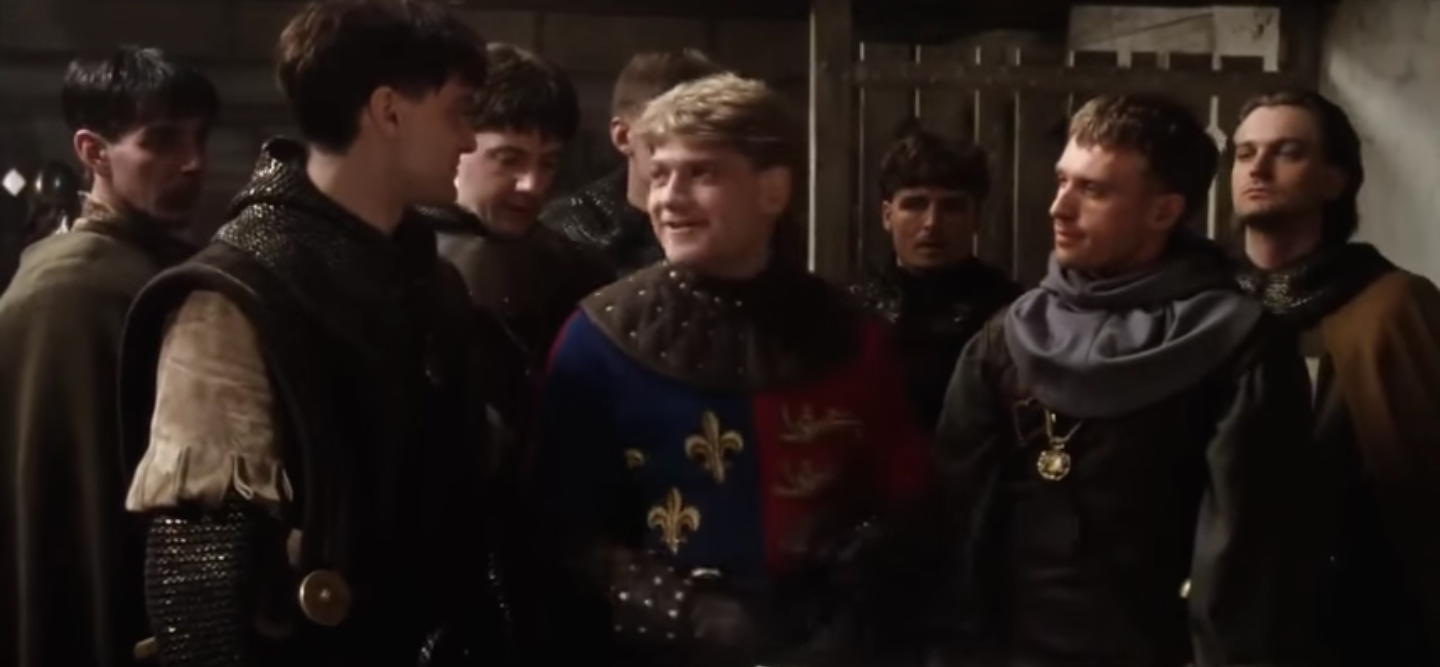If there’s been one theme that has recurred the most in this blog, it would be the duality of King Henry’s personality. There’s the side that suited Lawrence Olivier: The charismatic leader, the war hero. And equally, there’s the angry, vengeful side that TV’s David Gwillim delved into.
It’s clear that Kenneth Branagh is keen to show both sides of this coin. As his version of Henry V heads for Southampton, the stage is set for a showdown between monarch and the traitorous plotters who conspire against him. Before we reach Southampton, though, we are given a short scene on the cliffs of Dover.
Here, Derek Jacobi’s Chorus introduces us to the conspirers against the King – Scroop, Cambridge and Grey, three former friends of Henry who have sold their allegiances to France, and wish to depose the King.
This short scene – where a monologue from the play is blended with new direction for the film – ensures we know who these men are when we reach Southampton.
Once we arrive, we are brought to a dingy and shadowy building. Some stone features suggest this is a castle, but there’s also dark wooden walls dotted around. Duality and differences are even influencing the scenery here.
After some quick dialogue reaffirms the villainy of the plotters, Henry is introduced to the scene. Branagh is dressed in a bright red and blue costume that echoes the iconic garb of Olivier’s heroic incarnation of the King.
And for a few minutes, the film leans into this preconception about Henry, toying with the audience’s expectation that this is a personable and likeable King. As the traitors deliver flattery like “never was monarch better fear’d and loved”, Henry responds softly with peaceful words such as “we therefore have great cause of thankfulness”. It’s hard to imagine that anyone would fear this softly spoken fellow.
However, Henry’s mood quickly changes, and we get a glimpse of why he should be feared. As he hands letters to the three traitors, Branagh’s Henry sarcastically sneers the line “I know your worthiness”, revealing the King knows of the plot against him and is sure to act upon it very soon.
The conspirers draw their swords, but Henry’s allies – including the physically imposing Brian Blessed – quickly overpower them in a short but thrilling fight scene.
Henry then throws Scroop down on a table and leans over him, snarling dialogue so close to his enemy’s face that their noses are nearly touching. He tells the traitor that his revolt is akin to “another fall of man”, as Branagh adds a venomous tone to his delivery. Shadows engulf his face.
Here we have been shown Henry’s core contrast in its full nature. He’s equal parts charming friendly king and vengeful bitter despot. He commits his friends to death mere moments after engaging in jovial discussion with them.
Branagh’s direction, his delivery, the design of sets, and the style of costumes all play into this duality: the light castle stone and the dark wooden walls; the brightly coloured costume soon darkened by shadow; the charming chatter undercut by snarls; the friends soon turned enemies; the love swapped for fear.
This section of the film is immensely memorable, and builds on Shakespeare’s simple script – which has no real stage directions for this scene – to externalise the internal conflict within King Henry. It’s certainly the most interesting version of the Southampton plotter scene that we’ve seen on screen so far.
Next time, we’ll see how Branagh’s Henry fares in the final acts of the play.



Recent Comments